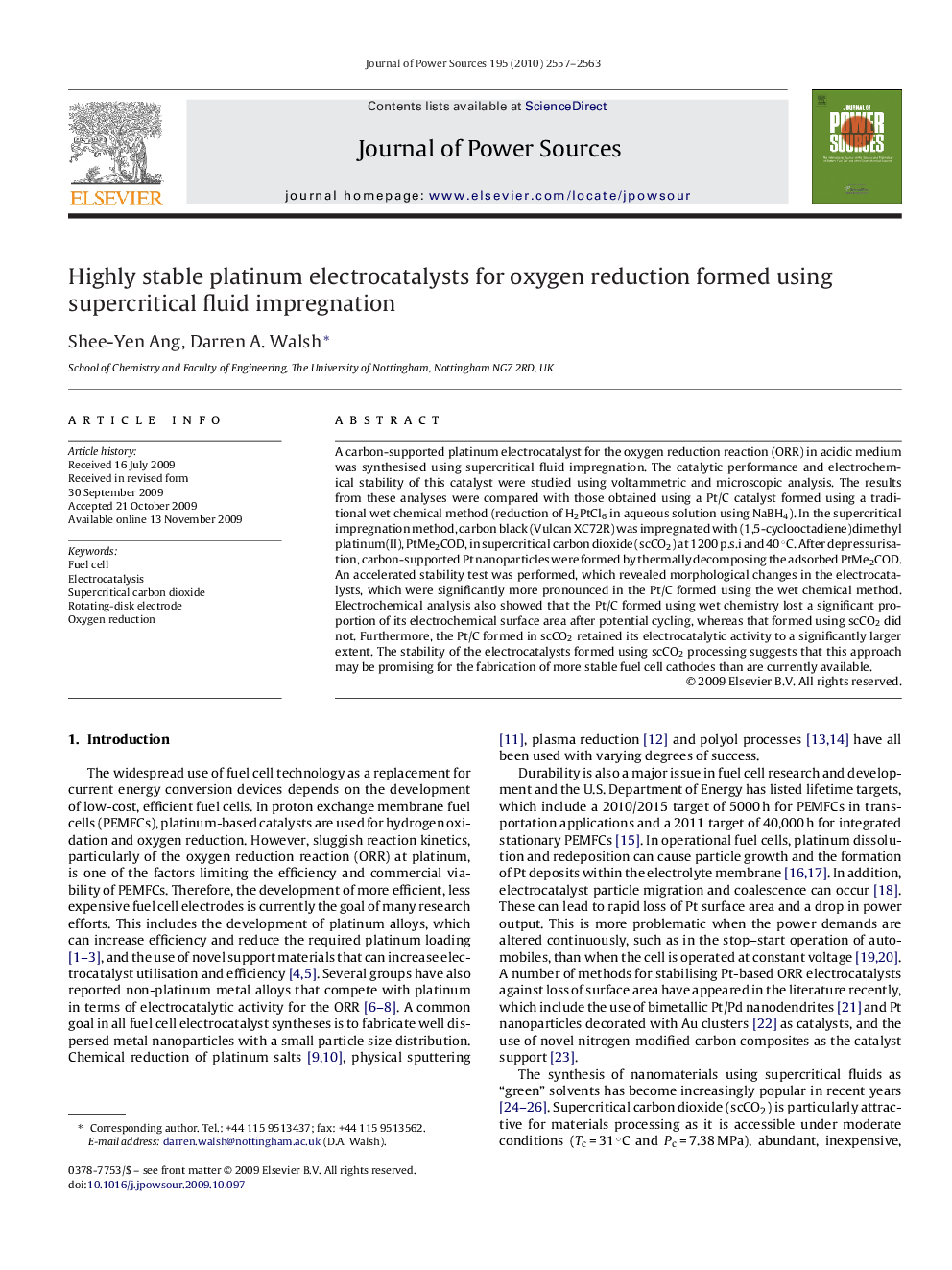| Article ID | Journal | Published Year | Pages | File Type |
|---|---|---|---|---|
| 1285000 | Journal of Power Sources | 2010 | 7 Pages |
A carbon-supported platinum electrocatalyst for the oxygen reduction reaction (ORR) in acidic medium was synthesised using supercritical fluid impregnation. The catalytic performance and electrochemical stability of this catalyst were studied using voltammetric and microscopic analysis. The results from these analyses were compared with those obtained using a Pt/C catalyst formed using a traditional wet chemical method (reduction of H2PtCl6 in aqueous solution using NaBH4). In the supercritical impregnation method, carbon black (Vulcan XC72R) was impregnated with (1,5-cyclooctadiene)dimethyl platinum(II), PtMe2COD, in supercritical carbon dioxide (scCO2) at 1200 p.s.i and 40 °C. After depressurisation, carbon-supported Pt nanoparticles were formed by thermally decomposing the adsorbed PtMe2COD. An accelerated stability test was performed, which revealed morphological changes in the electrocatalysts, which were significantly more pronounced in the Pt/C formed using the wet chemical method. Electrochemical analysis also showed that the Pt/C formed using wet chemistry lost a significant proportion of its electrochemical surface area after potential cycling, whereas that formed using scCO2 did not. Furthermore, the Pt/C formed in scCO2 retained its electrocatalytic activity to a significantly larger extent. The stability of the electrocatalysts formed using scCO2 processing suggests that this approach may be promising for the fabrication of more stable fuel cell cathodes than are currently available.
